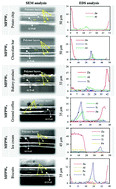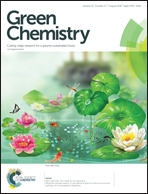Sustainable approach to recycling of multilayer flexible packaging using switchable hydrophilicity solvents
Abstract
Multilayer Flexible Packaging Waste (MFPW) represents the largest fraction of packaging waste and is mainly composed of multiple plastic films laminated with Al foil. In the EU, mechanical and chemical recycling technologies are usually used to separate polymeric fractions from Al; however, these recycling practices have inherent crucial restrictions related to the recycling rate (<66%), energy consumption, CO2 emissions, sustainability, and immiscibility of the recovered polymer blends, which is contrary to the aims for a circular economy strategy recently introduced in the EU. As part of this strategy implementation, the current research aims to develop a sustainable chemical-ultrasonic treatment approach for the recycling of packaging waste (including MFPW) while overcoming the above-mentioned limitations. In the developed approach, switchable hydrophilicity solvents (SHSs) were used as sustainable chemicals to break the chemical and mechanical bonds between MFPW layers, thus allowing separating all the layers individually and achieving a recycling rate >99% while making the reprocessing of extracted polymers much simpler. Dissolved plastic materials could easily be recovered in the form of solid residues without heating through saturation of an adhesive polymer/SHS solution by CO2 under cooling, thus changing the hydrophilicity of the solvent and converting it into a polar water-miscible form. Although the experiments were conducted on the lab-scale on six different types of MFPW, selected depending on the most active packaging technologies in the EU (as used for potato chips, chocolate, bakery goods, ground coffee, ice cream, and biscuits), the authors took into account the possibility of technology implementation at the industrial scale through designing a technology layout for the developed approach (based on the sequence of treatment processes and the obtained results). Metallographic microscopy, SEM-EDS, FTIR, and TGA were used to examine the materials recovered from each MFPW type as well as the changes in the SHS solvent. Lastly, the CO2-equivalent emissions and economic performance of the developed technology were evaluated.



 Please wait while we load your content...
Please wait while we load your content...